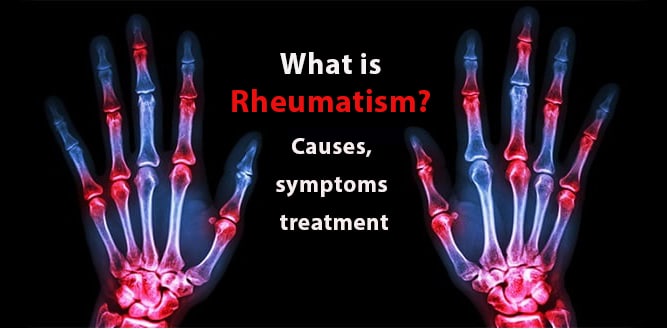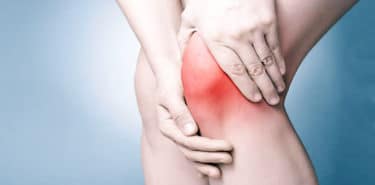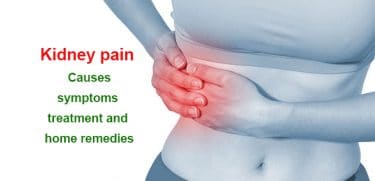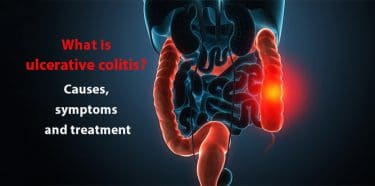Rheumatism is a chronic disease which is characterized by muscle weaknesses and muscle pains. It can be seen in every age and gender group, and it is widely seen among world; yet, it is more common among over middle-aged women. Backache and low back pain, loss of vision, color fading in fingers and exhaustion are typical symptoms of rheumatism. These symptoms can change depending on the person. Rheumatism has two types as inflammatory and non-inflammatory rheumatism. Treatment plans can differ considering the types. Osteoarthritis, osteoporosis, rheumatoid arthritis and fibromyalgia are the most known types. Cortisones and NSAIDs can be prescribed for treatment.
Table of Contents
What is rheumatism?
Rheumatism is a disease which is characterized by pain, swelling and limited movement in muscles, joints, bones and ligaments. It decelerates defense mechanism of body. It is mostly seen among women over 50 years of age; yet, it can be seen in any age group.
It can affect joints, muscles, skin, soft tissues like ligaments, heart, vessels, nervous system, lungs, liver, eyes and even respiratory system. Therefore, it is crucial to detect this disease before it causes severe health issues.
Causes of rheumatism
Rheumatism have several causes, and they are determinants for classification of it. In inflammatory rheumatism types, usually, a microbe causes inflammation in a joint. Weakened immune system can also trigger rheumatism. Another reason for inflammatory rheumatism is that some crystals like uric acid are located into joints or tissues.
Rheumatoid arthritis is a kind of inflammatory rheumatism, and it occurs when joints and membranes of joints get inflamed. It can affect internal organs and even the whole body if it is not treated. It is an autoimmune disease in which immune system attacks to healthy joint cells and joints get inflamed as a result.
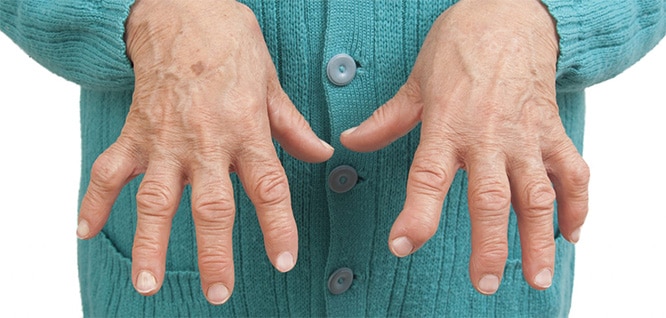
Non-inflammatory rheumatisms can be caused by damages to muscles and joints as results of accidents or blows. Sometimes, metabolic and psychological issues can cause non-inflammatory rheumatism, too. Genetic and environmental factors, age and gender are also the triggers for this type. For people who have family members suffering from rheumatism, the risk is higher.
Symptoms of rheumatism
- Pain, swelling and limited movement in joints (inflammatory rheumatism)
- Swelling and eburnation
- Heat
- Muscle weakness
- Pain in muscles while descending and ascending a ladder, or sitting down and standing up
- Eburnation and joint involvement in mornings
- Color fading in fingers in cold weathers
- Loss of sense (inflammatory rheumatism)
- Irregularity in sleep (inflammatory rheumatism)
- Loss of appetite (inflammatory rheumatism)
- Reduce in kidney functioning
- Blood clots in vessels
- Neurological signs as stroke
Symptoms can change depending on patients and type of rheumatism. Progression of disease can create limited movement caused by muscle weakness. For instance, people whose hands and wrists are affected; can have difficulty in holding objects or brushing hairs in later progresses.
Test and diagnosis of rheumatism
Your doctor may ask some questions considering your medical history and symptoms in order to diagnose. Therefore, you need to explain your all complaints in a clear way to your doctor. Taking samples of joint liquid and tissues, physical examination, radiography, laboratory and blood tests, MRG and X-rays are some methods used for diagnosis.
Treatment of rheumatism
Rheumatism does not have a specific and certain treatment. Applied treatment methods are usually targeting to suppress symptoms and prevent disease to damage other organs.
Drug treatment of rheumatism
To treat rheumatismal diseases, several medications can be prescribed. Some medications are used just to remove pain or inflammation whereas some others can affect the course of disease.
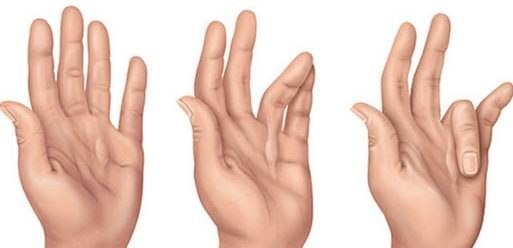
Below you can find some medications used in rheumatism treatment:
- Nonprescriptive oral analgesics like acetaminophen and prescriptive narcotics such as oxycodone and hydrocodone which are not affecting causes of disease
- Topical analgesics
- NSAIDs (non-steroidal anti-inflammatory drugs) like Ibuprofen, naproxen sodium and COX-2 inhibitors. These medications help reduce pain and inflammation
- Corticosteroids which have powerful anti-inflammatory features, but also side effects in long term use
- Anti-rheumatismal drugs (DMARD) which affect immune reactions and inflammation processes, and decelerate the progress of disease
- Biological drugs which are a subtype of DMARDs and target specific steps in inflammation processes
- Janus kinase (JAK) inhibitors which are a subtype of DMARDs and target Janus kinase paths in immune system responses
Treatment usually continues for a life time. In some periods, symptoms can diminish. Yet, they can return in a severe manner in flaming periods. Therefore, you should keep taking your medications regularly throughout your life! If patients do not respond to medication treatment, doctors may suggest injections. Injection is another treatment alternative for rheumatism.
Is cortisone unhealthy?
Taking cortisone for a long period can have some side effects such as muscle weakness, high blood pressure, some hormonal disorders and osteoporosis. Therefore, patients using cortisone for long periods should not delay their doctor checks and should make their regular tests.
Rheumatism exercises and physiotherapy
In cases of that medication treatment is not sufficient, physiotherapy can be a must. In this case, doctors recommend some physical exercises. You should repeat these exercises regularly. These may contain low back, neck, wrists and hand exercises.
Rheumatism can cause median nerve compression, i.e. carpal tunnel syndrome. This may cause some difficulties in using hands and wrists. If medication treatment does not work enough, you may need an operation.
Surgery for rheumatic diseases
If there is inflammatory rheumatism, operation may be the only choice. Tendon repairing, removing membrane of joint or joint replacement are the possible options for operation. Joint replacement treatment is done by removing inflamed joint and placing metal or plastic pieces instead.
Types of rheumatic deseases and inflammatory rheumatism
Basically, there are two types of rheumatism as inflammatory and non-inflammatory rheumatism. Rheumatism can also be classified as joint rheumatism and soft tissue rheumatism. Neck pain, low beck pain and osteoporosis are types of soft tissue rheumatism. Rheumatoid arthritis and osteoarthritis are most common joint rheumatism kinds. There are more than 200 types of rheumatism defined in medicine. Below you can find some most common rheumatism types:
Osteoarthritis
Osteoarthritis is characterized by joint pain and eburnation. The cause is that joints get hurt when people get aged. It is more common among people with obesity. Joints do not have any inflammation in this type. Swelling and pain in joints after using them for a long time or after a long rest are typical symptoms. It may also not include pain.
Rheumatoid arthritis
Rheumatoid arthritis is mostly a chronic disease, and its symptoms develop symmetrically. It means that when your left thumb gets swelled, your right thumb gets swelled, too.
Lupus
Lupus is an autoimmune disease. Joint pain, exhaustion, swelling and lupus rashes are typical symptoms.
Gout
Gout occurs when high amount of uric acid in blood causes crystallization. It can affect feet, hands, knees, ankles and tiptoes. Usually, men over 40 years of age are under risk.
Scleroderma
Scleroderma is that immune system causes body to produce much more protein collagens. In this case, skin and vessels can get thicker. Thicker blood vessels cause high blood pressure.
Infectious arthritis
It is an inflammatory arthritis type which is caused by infection. It affects knees and hip.
Fibromyalgia
Fibromyalgia (soft tissue rheumatism) is a kind of muscle stiffness which is related to stress, nervousness and tiredness. However, this case should not be confused with joint involvement. In fibromyalgia, joints do not have inflammation. This is commonly seen among women between 20 and 50 years old.
Since it is caused by stress and anxiety, patients should try to stay away from stressful conditions. Also, patients should not take much responsibilities which can be exhausting for them. As additional advices, doctors can suggest some orthopaedical products.
Osteoporosis
Osteoporosis means decrease in bone density. It has no inflammation. It is a common disease among elderly, and it can cause bone fractures in later courses. Arthritis and rheumatism are not the same. Arthritis is basically joint inflammation. However, rheumatism does not have to be inflammatory or affect joints.
How to handle rheumatic pain?
In winter times, cold weather affects the liquid flow in joints. Thus, rheumatic pains can get more severe. You should keep yourself warm and avoid wind in cold weathers.
In summer times, symptoms can be more obvious on days with much humidity. On those days, you should drink plenty of water. You can eat from Mediterranean cuisine such as artichoke, beans or celery. Heat is not good for inflammatory rheumatismal pain. It can take pain only for a short time. Cold compress is more effective for treatment of inflammatory rheumatism.
Rheumatic pain and meteorology
According to a study which is conducted in USA, rheumatismal symptoms reduce in high pressured and dry weathers whereas they increase in low pressured, high humid and rainy weathers. Cold weather also increases the symptom severity. However, it is very normal that even in healthy people, change in weather and air pressure cause rheumatismal pain since people can react differently to different weather conditions.
Rheumatism and spas
It is a common wrong belief that spas are beneficial for rheumatismal pain. Spas are only good for osteoarthritis. Therefore, you should definitely consult your doctor before going to spa.
Rheumatism during pregnancy
Some rheumatismal diseases can get better during pregnancy while some others get worse. However, usually this condition is not a threat for the health of baby. There can be some problems in first few days after birth, but these are temporary conditions.
Herbal treatment for rheumatism
Studies show that herbs from Mediterranean cuisine are beneficial for rheumatism treatment. Below you can find herbs which benefits rheumatism:
- Artichoke: It contains lots of folic acid and calcium, so it strengthens bones. It is useful for several rheumatism types, especially for gout.
- Beet: It belongs to Black Sea. It helps removing rheumatismal pain and symptoms.
- Celery: It reduces pain and sensitivity, and helps patient relax.
- Ginger: It dilates blood vessels and accelerate blood flow. Both as plant and its tea form are used in treatment.
- Oil of thyme: It is applied to body parts which are affected by rheumatism. It is useful for reducing pain in a short time.
Asparagus, clove, chamomile tea and tomato are other nutrients which are useful for rheumatism treatment.
Living with rheumatic disease
Especially some specific rheumatism types such as gout attacks may make people feel bad. Sometimes, patients do not want to get up in the morning or move at all. Although being free from all symptoms does not seem possible, patients can reduce symptoms by having a healthy diet and exercise program.
At this point, you should remember that you are not alone, and try to increase your mood. Having a low mood can cause more severe symptoms especially in soft tissue rheumatisms.
Tips for patients with rheumatic disease
- Include mostly foods from Mediterranean cuisine in your diet
- Eat fish at least twice a week
- Take 30-minutes walks in day time
- Do not tire yourself in work life. Balance your work and rest times
- Do relatively light physical exercises like fitness. Avoid heavy ones
- Go to your doctor checks regularly
- Develop successful coping mechanisms to fight stress. You may start to yoga or meditation
- Quit smoking as soon as possible
- Dress warmly in cold weather
- Drink 2-3 glasses of relaxing teas like chamomile and ginger teas per day
- Swim often! For more: >>> Rheumatoid Arthritis

